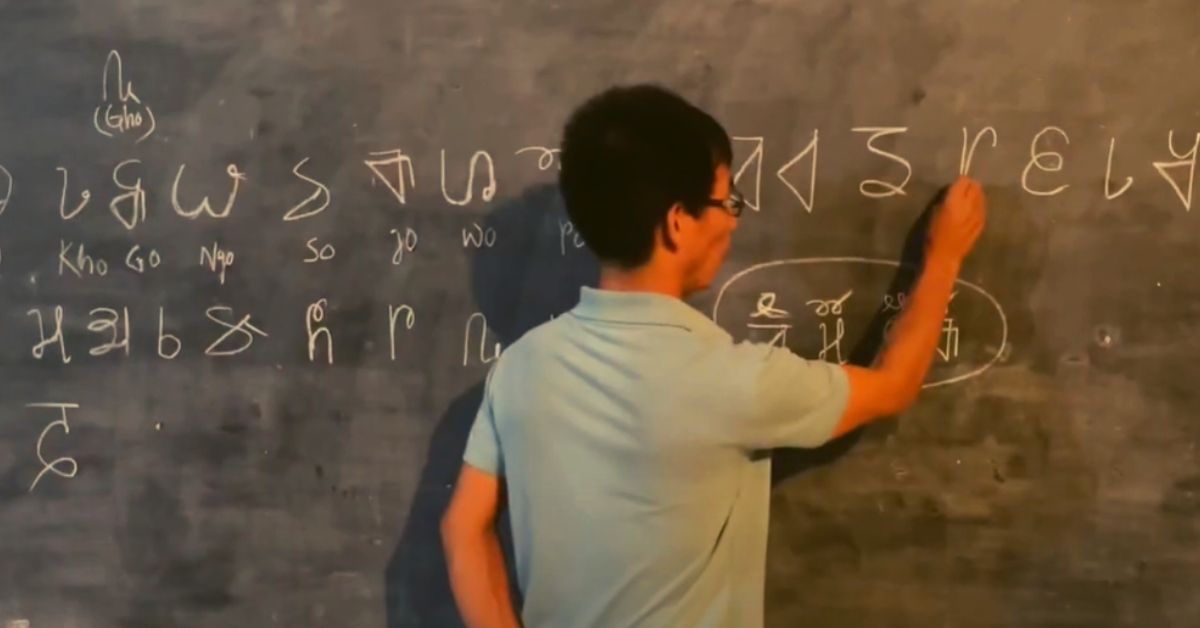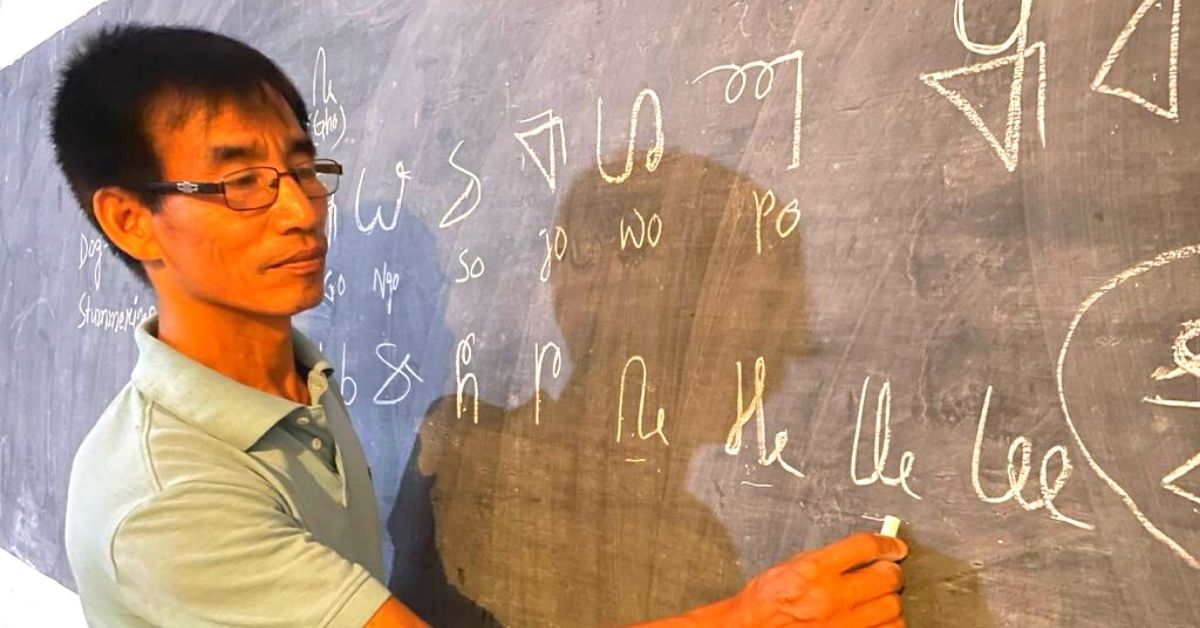Did you know that the feeling of love can be described in 9,000 words if we put all the Indian languages together? A country that is often touted as the treasure trove of linguistic diversity, has 780 languages of which 600 of them are on the verge of becoming non-existent.
In the last 60 odd years itself, close to 250 languages have become extinct in India, which means speakers of these languages have migrated onto other languages. This also means that they have left behind a significant part of their culture and identity.
So how does one go about preserving a language?
There are several routes like commercialising the language and encouraging it in school curriculum.
But what happens when the script of a language is missing? The ability of putting our thoughts into words and spreading information is worthless if there is no script. With no documentation of words that we speak, how does one pass it on to the next generation?
Even if a parent tries to teach their child the language, it will differ slightly from what their neighbours might teach their kids. This difference between spoken words eventually increases to a point where it becomes two different dialects.
This was the case with the Tangsa tribe of Arunachal Pradesh. The community is further divided into 40 sub-tribes, each having its own dialect. Over the years, the meaning of sentences and words grew so apart that one sub-tribe could not understand the other.

The population of the Tangsa community is roughly around one lakh and with each tribe speaking its own dialect, the danger of extinction becomes two-fold.
This fear is what prompted Lakhum Mossang from Changlang district to develop a common script that could be used by the entire community.
He began his work in 1990, and after a grueling 30 years, the script was finally developed in 2019. However, he passed away a year later. Today, his friend Wanglung Mossang is carrying forward his legacy.
Not Lost in Translation
Wanglung, a farmer by profession, has come forward to teach the script to college students and graduates. Fifteen students are already in the process of learning.
He is also a part-time cultural consultant to foreigners and while sharing about his heritage, he realised that the exact pronunciations of certain words were getting lost. So, he decided to collaborate with Lakhum and learnt the script seven years ago.
“To communicate with other community members, we have to use Assamese, English or Hindi. But this common script helps us save our folklores, songs, poetries, rituals and more. It has been accepted by the state government and soon will be introduced in the school curriculum. Chief Minister, Prema Khandu, will launch the book of Tangsa script on teacher’s day,” Wanglung tells The Better India.
The script is unlike any other language script, as it has 48 vowels and 31 consonants.
“In our dialects, the meaning of words change as per the tone. So, the script is developed on the basis of tone so that each sub-tribe can write in their own dialect using the vowels and consonants that are common across all dialects,” he says.
One of the milestones for Tangsa community was when the script was converted and adopted into font style on Microsoft Word.
“It is a great step forward. It is so exciting to be learning about a script and a whole system of writing created by an inspired person and being taught by community members like Wanglung Mossang, who is so committed to preserving their unique culture,” Stephen Morey, a linguistic research scholar and professor from Australia told EastMojo, who also contributed in converting the handwritten script in Microsoft Word.
Felix Anthony, a resident of Neotan village, says language is what gives identity to indigenious tribal communities. “It is easy to lose cultures and traditions in the absence of a proper dialect and its script. Oral traditions are prone to be forgotten, if not given much literary credit. Having a proper script not only makes the language legible but it also helps in preserving and promoting culture,” he says.
The efforts taken by Lakhum, Wanglung and the entire tribal community that has embraced this common script despite their differences, gives hope to the future of languages in India. If a small tribe can develop an entire script from scratch, the possibility of preserving those languages that are on the edge of extinction seems feasible.
Featured image: Wanglung teaching Tangsa to his students.
All images are sourced from Felix Anthony.
Edited by Yoshita Rao
If you found our stories insightful, informative, or even just enjoyable, we invite you to consider making a voluntary payment to support the work we do at The Better India. Your contribution helps us continue producing quality content that educates, inspires, and drives positive change.
Choose one of the payment options below for your contribution-
By paying for the stories you value, you directly contribute to sustaining our efforts focused on making a difference in the world. Together, let's ensure that impactful stories continue to be told and shared, enriching lives and communities alike.
Thank you for your support. Here are some frequently asked questions you might find helpful to know why you are contributing?

